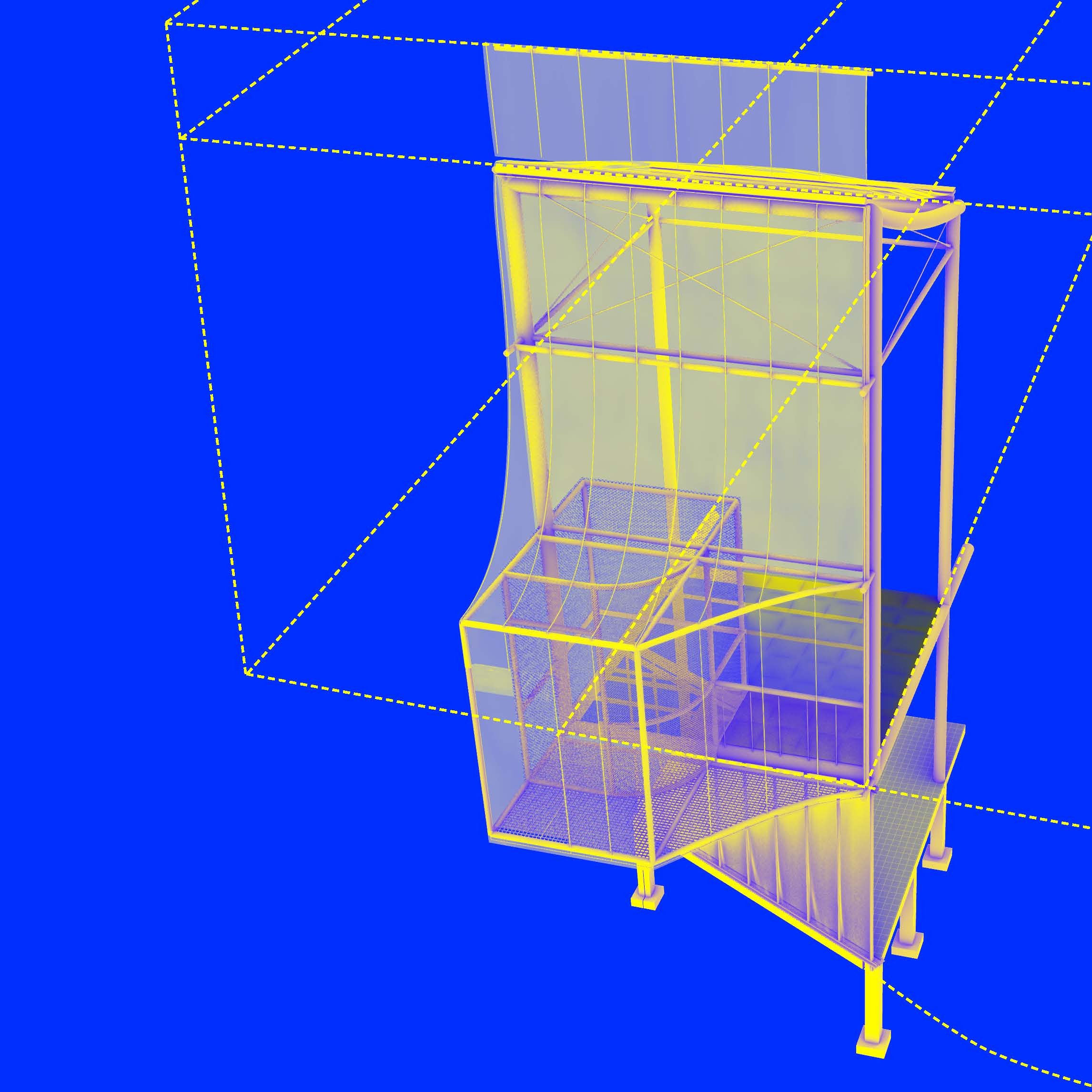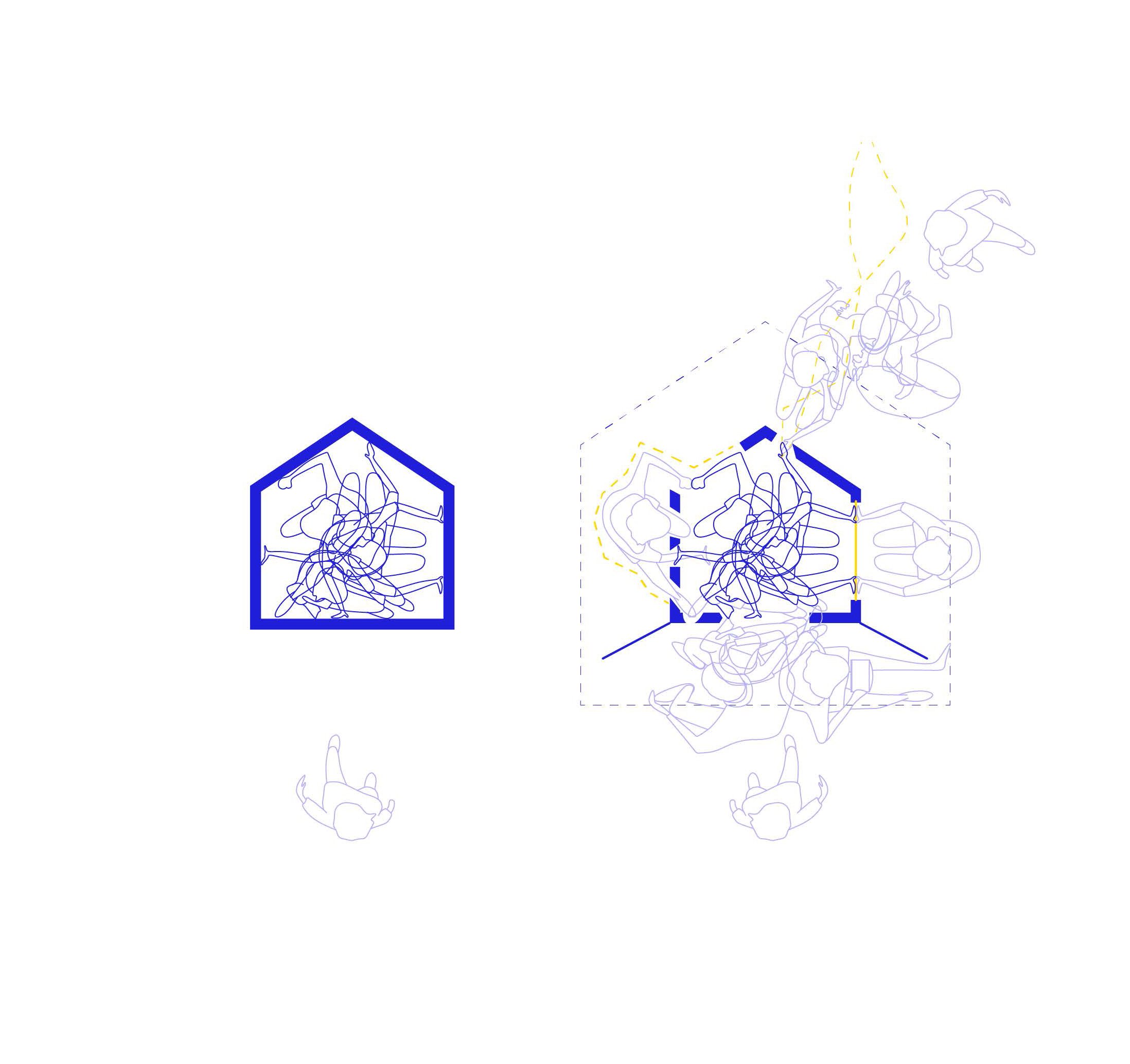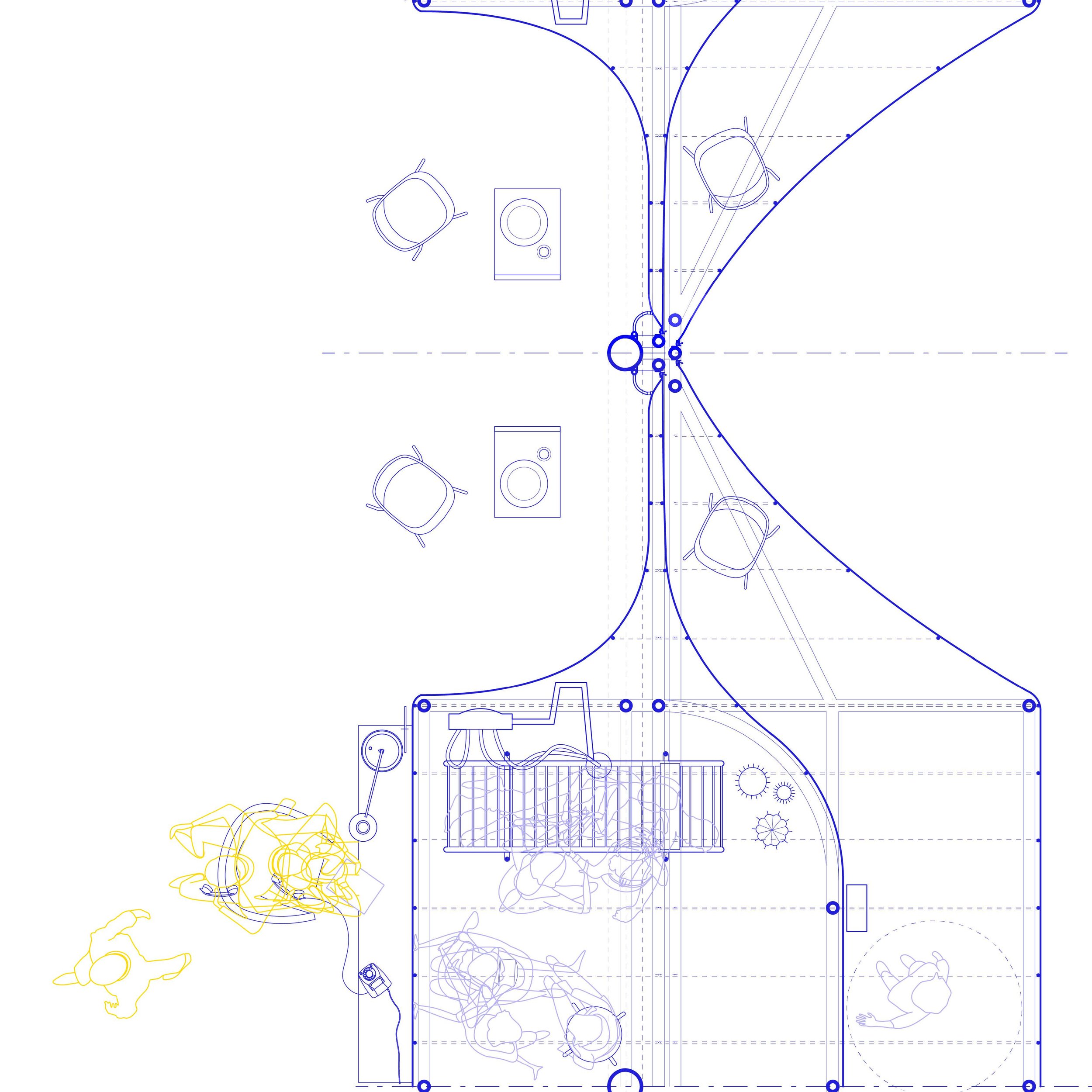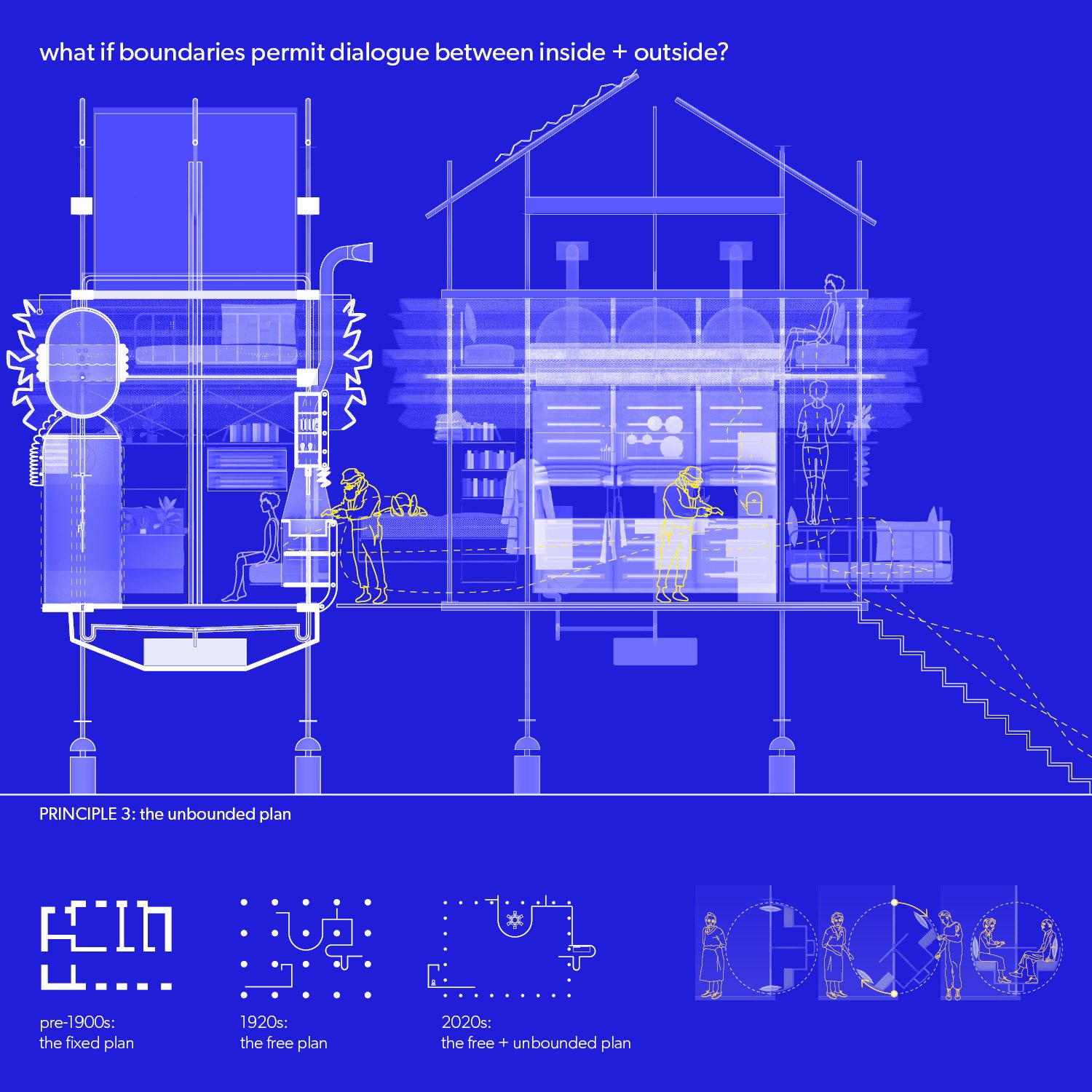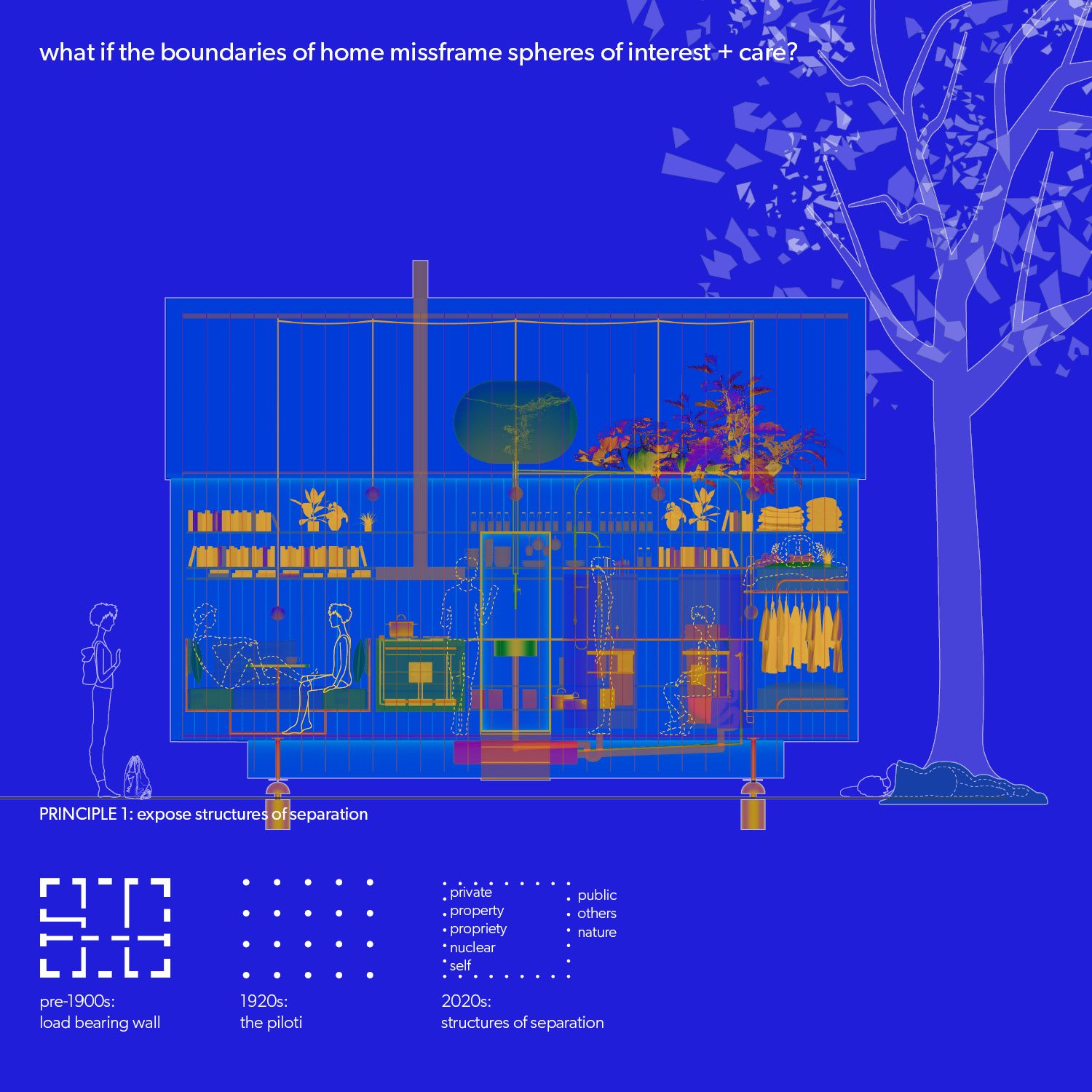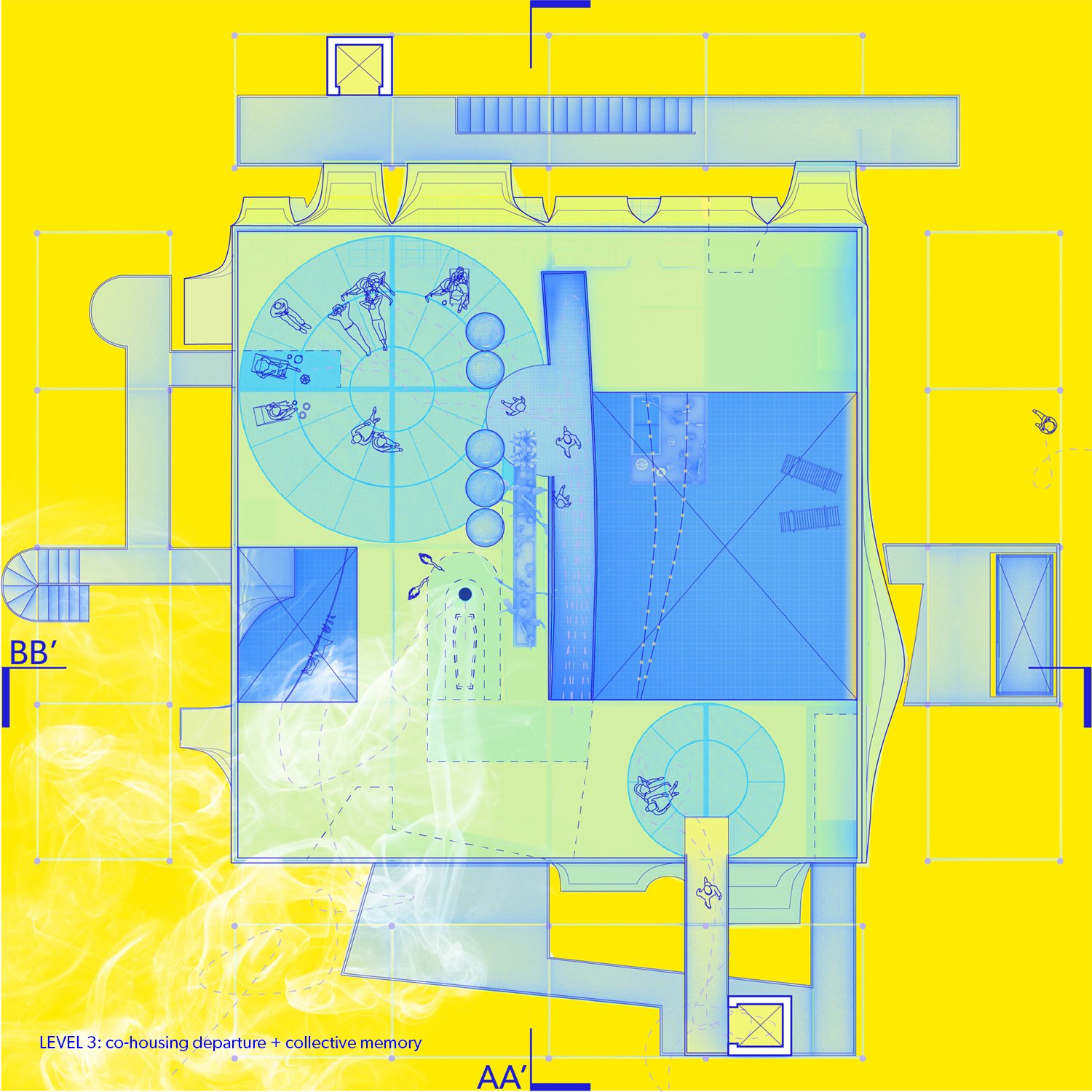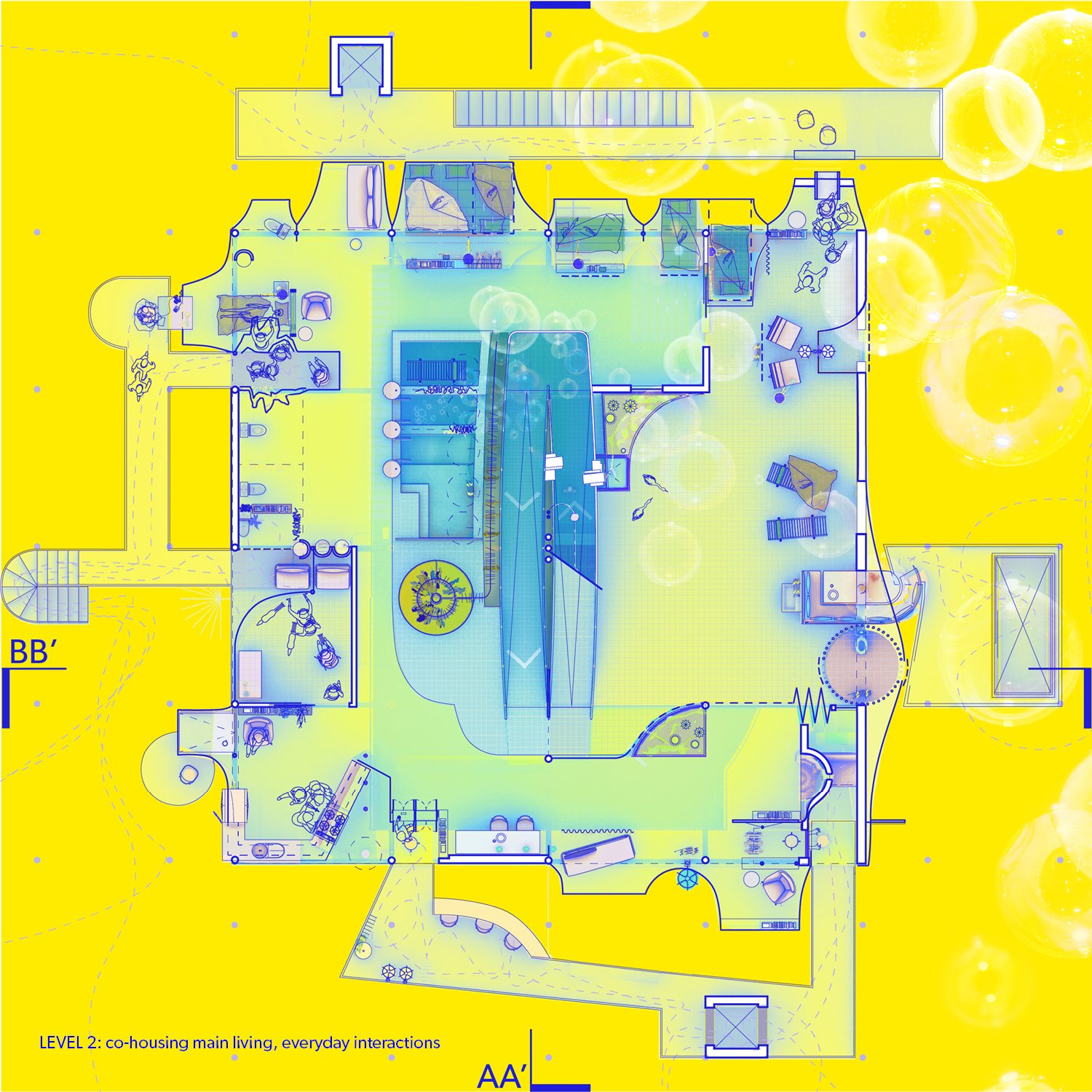
‘On Boundaries + Apertures’ by Maya Orzechowska
Master of Architecture (2018-2020)
Ryerson University, Toronto, Ontario, Canada
Key supervisors: Colin Ripley & Dr. John Cirka
keywords: climate change, inclusive practice, healthcare, boundaries, apertures, vulnerability, intimacy
On boundaries + apertures: drawing a vulnerable + intimate architecture
“Contrary to what one might imagine, our health will not come from a border or separation, but only from a new understanding of community with all living creatures, a new sharing with other beings on the planet. We need a parliament not defined in terms of the politics of identity or nationality: a parliament of (vulnerable) bodies living on planet Earth.” -Paul B. Preciado, 2020.
The boundaries and apertures of home are not separate from but play an active role in a politics of body and social body health. As both the idea of home and housing fail increasing numbers of people, the thesis sought alternatives to home’s narrative of utopic internal intimacy that endorses retreat and a relationship of non-responsibility vis à vis the public realm as the result is dystopic in its concealment and exacerbation of vulnerability and its resistance to change. Instead, a vulnerable and intimate architecture centers the vulnerable body to uncover unique, pluralistic, personal intimacies.
To draw out the uncanny, repressed and emotional in home, Five Principles and corresponding drawings of unhomes are proposed. The Principles are inspired by Corbusier’s calibration of the subject and values of modern architecture almost a hundred years ago, in the aftermath of the 1918 Spanish flu and in a time where Tuberculosis was a leading cause of death. During Modernism, concern about fitness, evading disease and the aesthetics of diagnostic technologies such as the x-ray revolutionized the architecture of home. Drawing in the midst of the 2019 Coronavirus pandemic and the environmental crisis, at a time of heightened visibility of social and economic polarizations and of increasing tendencies towards solitary inhabitation, it seems time to reevaluate the physical and psychological effects of architecture’s boundaries on health in a more wholistic manner.
Architecture’s inside and outside, traditionally structured according to a narrative of binarization (nuclear internal intimacy and vulnerability to the external environment and external people or groups of people) are re-examined. The uncanny phenomenon is used as a diagnostic tool to explore alternative vulnerable and intimate homes. Founded in the German terms for homely and unhomely, the uncanny (as described by Freud, Dolar, Kunze) represents the exposure and external visualization of that which should be secret, intimate or interior. The change of thought incurred due to the external stimuli exposes or reveals the functioning of internal mechanisms or aperati of thought (Kunze, 2003), and in doing so reveal that a personal identity, belief or desire is contextually constructed (Kunze, 2003). This crossing of a gap, boundary or threshold between internal and external, undermines the previously unquestioned binary categorizations and destabilizes the system by exposing it. The cultural fictions embedded in the architecture of home’s boundaries can be demonstrated utilizing the uncanny’s destabilizations.
Making the internal and secret within the home (including the hoarded possessions contained in it, sets of rituals/behaviours, and cultural expectations of domestic utopia) haunts home with a plethora of cultural truths about home that are normally concealed. The x-rayed unhome exposes the forgotten history of cultural and architectural choices that have constructed the prevailing narrative and balance of self-protection, self-interest and isolation embedded in ideas of home and homemaking. The vulnerability incurred by the x-ray reveal permits an opportunity to speculate alternatives to homes that isolate and protect power hierarchies and consumerism. Instead, the unhomes provide flexible layers and openings to speculate more varied, sustainable and equitable forms of the social interactions and accidental encounters that are essential for mental health and well-being. These aspects of health are often omitted in a Western medical approach based on mind-body duality, and the project’s unhome studies intentionally transgress the boundary and draw interrelations between external and internal, bodily and psychological, reason-based and emotional.
Rather than revealing a reality, the drawings explore the contingencies or interrelations between the psychological and physical; the internal and the external; the cultural idea and the personal experience. Drawing inspiration from culturally neglected and undesirable homes reveals a larger system of cultural beliefs and to trouble the conventional concept of desired or dream home. It exposes undesirable features of homes and desirable aspects and potentials of unhomes. The drawings undermine classification of desirable (home) and undesirable (un-home) as a fictional construct. They expose current homes as a mélange of both, and suggest the homes of the future could soften, expand and remix their boundaries. The intention is to reinvesting architecture with intimacy and desire through a process that, by allowing space for dreaming, develops spaces that dream.
The speculative healthy home (as a universal right) is based on new boundaries of self in relation one’s neighbours and context, in the broadest sense. This new home relishes in the pleasure of mediating the tensions of vulnerability and intimacy, health and social health (in its multiple readings) through apertures and boundaries that reflect its inhabitants. This home is urban and personal in its conscious relationalities, and its temporally selective connection and isolation, regardless of its distance.
Preciado, P.B. (May/June 2020). Learning from the Virus. (Stevens, M. Trans.). Artforum. Retrieved July 30, 2020, from: https://www.artforum.com/print/202005/paul-b-preciado-82823
Kunze, D. (2003). The Natural Attitude versus the Uncanny. Pennsylvania State University. Retrieved March 3, 2020 from http://www.arch.mcgill.ca/theory/conference/papers/Kunze_Donald_revised_June6_07.pdf
Maya Orzechowska / MArchitecture / Ryerson / 2018-20
Maya is an architectural designer whose background in public and private realm projects inspired a Master’s thesis that interrogates the binarization of these realms and its impact on empathy. Her drawings investigate the boundaries of home’s influence on the boundaries of self, including concern for others and for one’s context.
